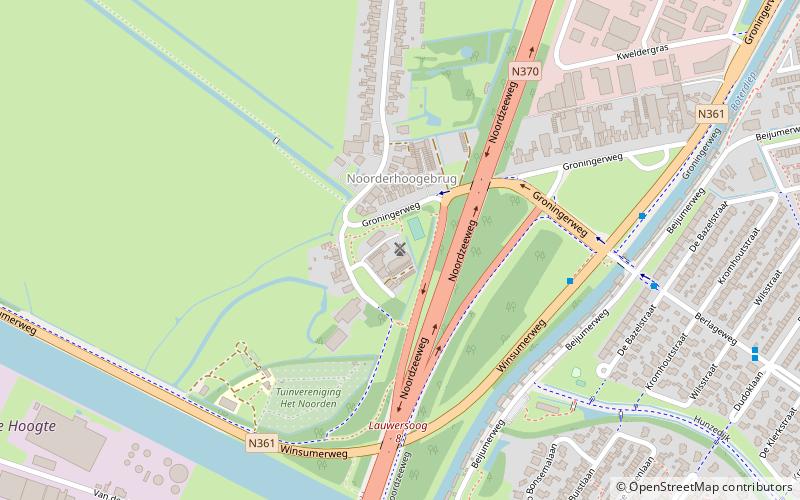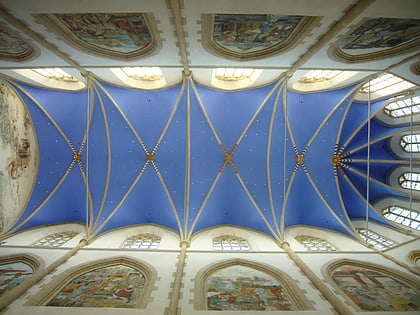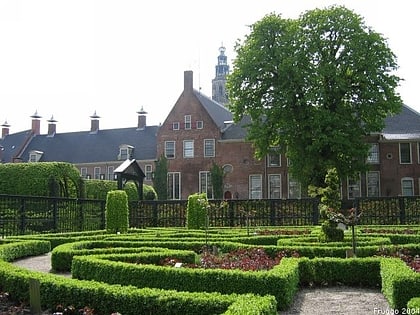Wilhelmina, Groningen


Facts and practical information
The Wilhelmina is a corn mill in the village of Noorderhoogebrug, near the city of Groningen.
The predecessor of this mill, the corn and hulling mill 'De Hoogebrug' burned down in 1906. The following year, using mill 'De Leeuw' from Sappemeer, the present, tall mill, was built as a corn and hulling mill. The peeling stones were removed relatively soon, the mill remained in operation as a corn mill with three pairs of grinding stones thereafter. In 1947, a storm put an end to wind-powered grinding. The following year, the mill changed hands. The new owner finally got a restoration done in 1963. On this occasion, the name of the mill, De Leeuw, changed to the name of the miller's wife, Wilhelmina. In 1972, the mill fell victim to another storm. After an extensive restoration, the mill has been in regular voluntary operation since 1982. In the 1990s, after a storm, the sails were replaced by a new sails with self-locking. In the basement of the mill is a store where products are sold that are milled by the volunteer miller couple. For many years the mill was owned by the Molenstichting Hunsingo en Omstreken, the current owner is the Stichting De Groninger Poldermolens. The intention is that this corn mill will be taken over by another owner. Until the elevation of corn mill Edens in Winschoten, this mill was the highest mill in the province of Groningen.
Molenstreek 1Oranjewijk (Noorderhoogebrug)Groningen
Wilhelmina – popular in the area (distance from the attraction)
Nearby attractions include: Martiniplaza, Martinitoren, Noorderplantsoen, Papiermolen.
Frequently Asked Questions (FAQ)
How to get to Wilhelmina by public transport?
Bus
- Boterdiepbrug • Lines: 163, 65 (5 min walk)
- Van Eesterenlaan • Lines: 65 (9 min walk)
Train
- Groningen Noord (26 min walk)











